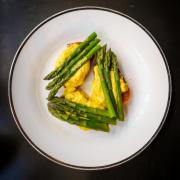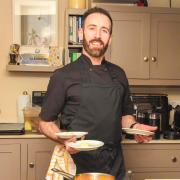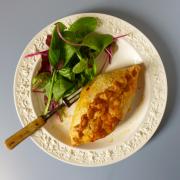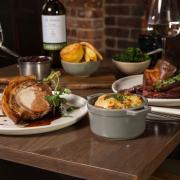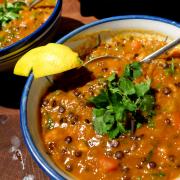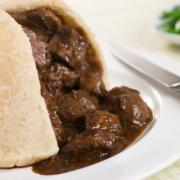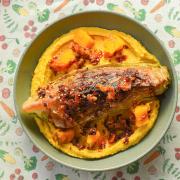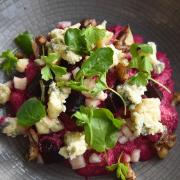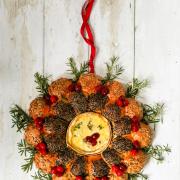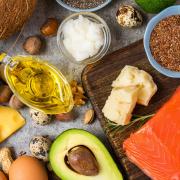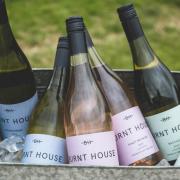As part of our Suffolk Pantry series, food writer Linda Duffin shows how to make a simple dish using Shimpling Park Farm Lamb

There aren’t many upsides to the coronavirus pandemic, apart from a renewed and devout appreciation of our health workers and teachers. (Hands up everyone who wants to go back to home schooling. Any takers? No, I thought not.) It’s scary, stressful and we all want it to be over so we can get back to our normal lives, if we ever can.
What is has done is make many of us take stock of the way we shop and as an extension of that, how we feed ourselves and our families. The impossibility, in the early days of lock-down, of buying basic supplies as supermarket shelves emptied made us realise how dependent we were on these giant retailers.
It was our small, independent shops and producers who stepped up to fill the gap, often sourcing additional products so customers wouldn’t run short of essentials, and arranging safe pick-ups or deliveries. Many quickly set up online shops. For some people this has led to a permanent change in shopping habits and the realisation that independents often offer greater quality and choice.
Alice and John Pawsey run Shimpling Park Farm near Lavenham, growing arable crops and raising sheep organically. Lockdown couldn’t have come at a worse time. They were scrambling to plant crops after an endlessly wet winter and about to start lambing. John broke the workforce into small units to protect those who had vulnerable family members while Alice shopped for everyone and provided hot meals where needed. It changed the way she provided for her own family.

“When lockdown started everyone panicked,” she says. “Everyone’s response was the same: I’ve never experienced hunger, am I going to be hungry? My feeling is we’re essentially busy and we’re lazy. It’s easy to pack everything into a trolley in ten minutes until that becomes an unpleasant experience and I think we’re all finding supermarkets unpleasant at the moment.
“I have changed my shopping habits. I asked myself what I went to the supermarket for and tried to find online suppliers. Once I’d located them and set things up, it was really quick and easy – like having an online High Street of independent retailers.”
Alice and John are members of that band. They rear New Zealand Romneys, tough, disease-resistant and independent sheep. Their 1,000 breeding ewes lamb outside, largely unaided, and graze the farm’s grass and clover (“rocket fuel”, says Alice) or in winter, home-grown haylage, while helping control weeds and contributing their share of organic matter to the soil.

Find out about this exciting new wine shop in Woodbridge
The shortages we all experienced during lockdown have confirmed Alice’s views about food security. “I don’t think we should be a net food importer. It’s hugely complex and the UK has never produced all its own food but my instinct says, especially after coronavirus and Brexit, as an island nation it’s important to safeguard our food supply,” she says.
“We need to look at ways of being more productive and not fall for the easy option and buy cheap imports. It seems to me counter-intuitive to say the world is a global market place and we should outsource everything. I’m very uncomfortable with that.”
The Pawseys sell half and whole lamb carcasses from the farm, while anyone who wants individual cuts can buy them from a selected number of butchers throughout the country. The meat is butchered for them by Greg Strolenberg of nearby Lavenham Butchers, keeping things local.
Lavenham Butchers closed during lockdown but kept working. Greg’s wife Jen says: “We did deliveries, not just of meat but wine, toilet rolls, paracetamol, flour and baking powder, handwash, fruit and veg. We were doing 200 deliveries a week at the height of lockdown and, since we re-opened, we’ve had more people coming into the shop. I think people care that we have a relationship with our farmers and we know where our meat is coming from.”
And she says new customers notice a difference in quality. “One lady commented on our mince and said how much better it is than Tesco’s! Another lady pointed out that while it might seem more expensive, the quality is better. If you buy chicken breasts, for example, they’re not full of water and they don’t shrink down to nothing when you cook them so they go further.”
Back at Shimpling Park, Alice and John are planning for the future. The farm has been in the family for 115 years and its 600 acres have been fully organic since 2005. The couple also contract farm for others, bringing the total to 4,500 acres. Shimpling Park is already a carbon sink, meaning it sequesters more CO2 than it produces and since they went organic there’s been a huge increase in the numbers and species of birds, butterflies and other wildlife.
“Environmentally, emotionally and financially it was a route we wanted to go down,” Alice says. “We’re still at the mercy of the weather, like any farmer, but if something fails at least we haven’t thrown tens of thousands of pounds of chemicals at it. We constantly innovate, experiment and research.”
And that means John realising a long-held ambition. For 20 years he has been considering agro-forestry of the kind pioneered by the late Prof Martin Wolfe at Wakelyn’s. This is a system where trees are grown around or among crops and pastureland, mimicking natural ecosystems, increasing sustainability and biodiversity, improving soil structure and carbon sequestration and reducing erosion. It also provides farmers with additional income as they can crop the trees either for timber, fruit and nuts or as a fuel source.
“I’ve got 45 acres I’ve been earmarking and I’ve never been brave enough to do it,” says John. “Then I realised if I didn’t do it soon I’d be dead!” He is planting species similar to those which grow in an ancient woodland on the farm, a Site of Special Scientific Interest. The trees will be planted in broad alleys with arable crops in between, and he’s also aiming to diversify into wild camping, nature walks and to expand the farm’s educational work .
It is a long-term project – the trees won’t mature for 50 or 60 years and John cheerfully admits he won’t be here to see them fully grown. But he says: “We’re doing it for future generations – and future generations of wildlife.”
RECIPE
LAMB FILO SPIRAL (serves 6)
Greek-influenced, this combines the lamb filling from a moussaka with the shatteringly crisp filo pastry of a spanokopita. It looks impressive and makes 500g of lamb mince go a long way.
Ingredients:
500g lamb mince
2 onions, peeled and chopped
2 fat cloves of garlic, peeled and chopped
1 tspn dried oregano
1 1/2 tspn dried mint
2 bay leaves
Approx 7cm piece of cinnamon stick
2 tbs tomato puree
2 tbs plain flour
1 glass red wine
1 tin of tomatoes, chopped
Salt and pepper
120g feta cheese
6 sheets of filo pastry
Olive oil, for brushing
Sesame seeds, a mix of white and black if possible
Method:
Put a deep frying pan on a medium heat and add the lamb mince, chopped onions and garlic, cinnamon stick and herbs. Cook for about 10 minutes, stirring to break up the mince. Scrape a hole in the mix, spoon in the tomato puree and cook it off for a minute before stirring through.
Stir in the flour, cook for a minute or two, then mix in the wine, followed by the tomatoes. Season with a little salt and pepper and cook on a low to medium heat for about 30 minutes, stirring often so it doesn’t catch. The mixture should be very thick by the end with most of the liquid driven off. Check the seasoning and adjust if necessary.
Allow to cool, then remove the bay leaves and cinnamon stick and stir in the feta cheese, crumbled into small chunks. Chill thoroughly, for a couple of hours or overnight.
Pre-heat the oven to 190C/375F/Gas Mark 5. Dampen a tea towel and use it to keep the spare filo sheets covered while you work. Brush your work surface liberally with olive oil, and remove one sheet of pastry.
Place on the oiled work surface, long side towards you. Brush the top with more oil, then add a second sheet. Oil that one too. Don’t be stingy with it.
Now put a third of the lamb mixture in a line just above the bottom edge and roll the pastry up to enclose the filling, continuing to roll up to the top edge until you have a neat sausage. Gently form it into a coil and place it in the centre of the pan.
Repeat twice more, coiling each filo sausage around the previous one and continuing outwards in a spiral. Brush the top with more oil and sprinkle with the sesame seeds.
Place in the middle of the oven and cook for 50-60 minutes until crisp and brown. Check after 40 minutes and carefully pour off any lamb fat that’s collected at the bottom of the pan.
Once done, rest for 10 minutes, then serve cut into wedges.




